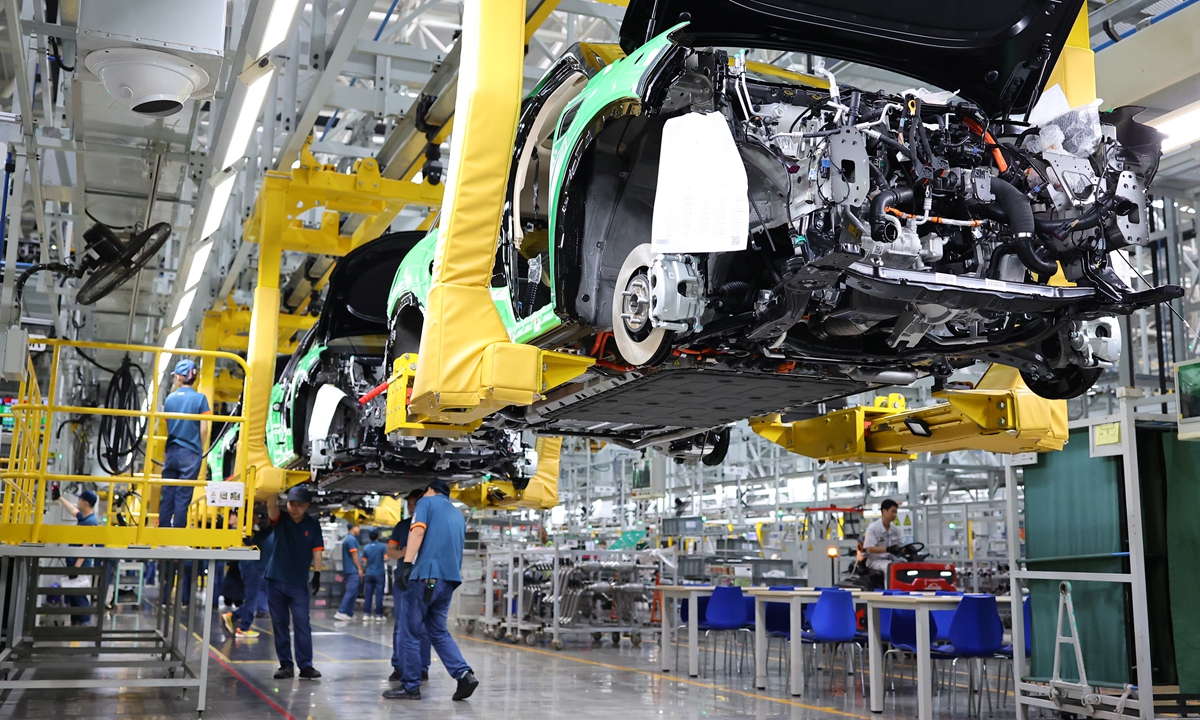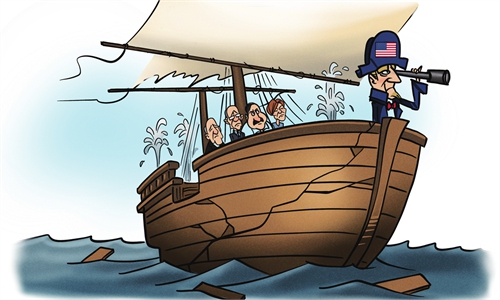
Workers assemble new-energy vehicles (NEVs) at a plant in Southwest China's Chongqing Municipality to fill overseas orders on September 21, 2023. NEV exports totaled 727,000 units in the first eight months of 2023, up 110 percent year-on-year, data from the China Association of Automobile Manufacturers showed. Photo: VCG
The Red Sea crisis continues to affect world trade, with rising costs as most carriers avoid the region amid mounting risks. The vehicle industry is anticipated to bear the brunt of the disruptions, industry insiders have told the Global Times.
The crisis is testing the resilience of the auto supply chain, particularly for new-energy vehicles (NEVs), which are a key part of China-Europe trade, insiders said.
Domestic industry players are striving to cope with the impact.
China mainly exports NEVs to Europe, and they are mainly carried by sea, using ro-ro ships that transit the Red Sea, Tommy Tan, president of Shanghai EPU Supply Chain Management Co, told the Global Times on Monday.
A trader based in Ningbo, East China's Zhejiang Province, said on Monday on condition of anonymity that the NEV sector will bear the brunt of the Red Sea crisis.
"Higher shipping costs are inevitable," he said, and his firm is discussing adjustments with its European partners.
If they don't transit the Red Sea, vessels will need to detour around the Cape of Good Hope in Africa, adding an estimated 7,000 to 10,000 kilometers and an extra seven to 10 days to the journey, which means additional costs and time. Major world shipping companies have already raised their rates.
Maersk announced diversionary charges on December 21, saying that using different routes was necessary for safety but was also more expensive.
Due to severe operational disruptions, the line also imposed an emergency surcharge for selected markets from January 1, 2024 until further notice.
MSC also announced rate changes. As from January 1, 2024 (sailing date) until further notice, MSC will charge an extra $1,000 for a 20-foot container and $1,500 for a 40-foot container on all shipments from Northern Europe to the Indian subcontinent.
The EU imported more than 500,000 Chinese vehicles in 2022, and about 63 percent were battery-electric models, the European Automobile Manufacturers' Association said in September.
Repercussions on China's car industry are anticipated, primarily due to higher shipping costs, Cui Dongshu, secretary-general of the China Passenger Car Association, told the Global Times on Monday.
While there could be an impact on both imports and exports, disruptions to the domestic market's supply are expected to be minimal, given the complete industry chain in China's NEV sector, insiders said.
Companies are actively pursuing strategies to navigate supply chain challenges, resorting to alternatives such as utilizing the China-Europe freight trains. However, while the train serves as a substitute, it can't totally supplant sea transportation.
"If the response measures are to shift to railway transportation, it can only be in the form of railway containers… The timeliness can be met, but transportation capacity and costs will still pose problems," Tan told the Global Times on Monday.
An industry insider based in Europe told the Global Times on Monday that there is less concern about the NEV trade so far, because most companies have maintained adequate inventories. In addition, the duration of the Red Sea crisis is still relatively short so far in terms of its impact.
If disruptions persist, there might be an impact on deliveries and lead to higher transportation costs, the insider noted.

